Who Will Win in the Fight Between Water Filters and Viruses?
The water entering your home is used for just about everything in your life. From washing dishes to showering, and even filling pots. Having a clean water supply is more important now than ever. For many homeowners, this is why they have a water filtration system in place.
The most common types of water filtering are microfiltration and ultrafiltration, and the main difference between the two lies in the pore size of the filter. An ultrafiltration filter pore size is 10X smaller than a microfiltration filter, which makes it a highly effective solution for eliminating nasty germs, viruses, and bacteria.
How Small Can Ultrafiltration Go?
 Think about the screens on the windows throughout the house. The pores on those are pretty small, so they can keep out insects, leaves, and other debris. But how small are the pore sizes on water filters?
Think about the screens on the windows throughout the house. The pores on those are pretty small, so they can keep out insects, leaves, and other debris. But how small are the pore sizes on water filters?
The pore size in an ultrafiltration filter is 0.01 microns. A micron is 1 millionth of a meter. And the pore size of this filter is 100X smaller than that.
That’s tiny! So it catches just about everything, including harmful viruses and bacteria. The filter is built using membrane technology, which removes all suspended solids from the water.
The majority of living organisms, including various types of bacteria and viruses, are larger than 0.01 microns, so the filter can capture these pathogens and remove them from the water as it travels to other parts of the home.
Enteric, Hepatitis A Norovirus, and Rotavirus are just a few of the many viruses this filter can capture, and removing them from the water can prevent the awful symptoms they cause like fatigue, muscle pain, fever, nausea, abdominal pain, vomiting, and diarrhea. Avoiding these viruses, and their symptoms are in everyone’s best interest.
Using a Distillation Process to Remove Bacteria & Viruses

Distillation is another powerful and effective method for removing bacteria and viruses from water. This process uses evaporation as a purification method. It starts with heating water.
This boiling process can kill many viruses and bacteria, and then the water turns to steam. As it evaporates, the microorganisms can’t evaporate with the water, so they are left behind while the vapor then condenses into a purified liquid state.
The CDC has proven that distillation is effective at removing various types of bacteria from water such as campylobacter, salmonella, shigella, and E. coli. Headache, fever, diarrhea, nausea, vomiting, stomach cramps, dehydration, and blood in the stool are common symptoms for many of these bacteria, so most people would agree that it’s best to avoid consuming them.
The Science Behind UV Water Treatments
 Ever seen a kid outside playing with a magnifying glass? They’ll bring out a plastic toy and set it on the sidewalk. Then they’ll hold their magnifying glass over it and wait for the sun to do its magic.
Ever seen a kid outside playing with a magnifying glass? They’ll bring out a plastic toy and set it on the sidewalk. Then they’ll hold their magnifying glass over it and wait for the sun to do its magic.
Ultraviolet rays are a fascinating piece of science to experiment with as a kid, and they are also an effective method for penetrating and destroying bacteria and viruses in water.
These UV water treatments attack the genetic code, or DNA, of the bacteria or virus. This prevents the microorganism from reproducing and spreading.
UV light water treatments are considered to be a more environmentally sustainable purification process because they don’t add any chemicals to the water. This keeps the taste of the water consistent while preventing bacterial and viral contamination at the same time.
About Bud’s Plumbing & Repair Service
Bud’s Plumbing & Repair Service is a local Evansville, IN plumbing company specializing in full-service solutions at honest, upfront prices. They guarantee peace of mind and complete satisfaction to their customers. Enjoy fast turnarounds, top-notch workmanship, and competitive pricing with full transparency for every plumbing need.
Distribution Links +
- lubbocks969thebull.com
- wrcbtv.com
- magic1065.com
- fox21delmarva.com
- wboc.com
- tulsacw.com
- erienewsnow.com
- weny.com
- 1007thescore.com
- doublet973.com
- 937theeagle.com
- fox34.com
- lubbockcw.com
- mylubbocktv.com
- oldies977lubbock.com
- 1077yesfm.com
- ktvn.com
- wfmj.com
- htv10.tv
- snntv.com
- central.newschannelnebraska.com
- metro.newschannelnebraska.com
- southeast.newschannelnebraska.com
- midplains.newschannelnebraska.com
- northeast.newschannelnebraska.com
- plattevalley.newschannelnebraska.com
- panhandle.newschannelnebraska.com
- rivercountry.newschannelnebraska.com
- wrde.com
- telemundonuevomexico.com
- wfxg.com











